- Author Matthew Elmers [email protected].
- Public 2023-12-16 21:49.
- Last modified 2025-01-24 09:17.
Around the sea of abusive armor worries, and the cavalry among them is steep to match the hill.
Will fill all the depressions and the terrain will be equal
and the mountains will be strung like beads on a braid.
And the faces of the soldiers are covered with swords, spear points are set. I can understand their letter.
He raised the lion's paws above the chain mail, and the army listens to his serpentine gaze.
Arabian breed and banners and horses, and armor, and the poison of arrows, carrying the plague to the enemies.
Arab poet Abu Nuwas and al-Mutanabbi, 915-965
Samples of the material culture of the past centuries. Not so long ago, an article was published on "VO", which was about … no matter what, it is important that it was written there that the Arabic inscriptions on the "helmet of Alexander Nevsky" prove something. And they do not prove anything, since the helmet of Alexander Nevsky as such does not exist. And the fact that does not exist cannot prove anything! But do we have helmets with Arabic inscriptions in our museums? Well, let's say in the same Kremlin Armory? There is! And what do they prove? And now we will tell you about this.
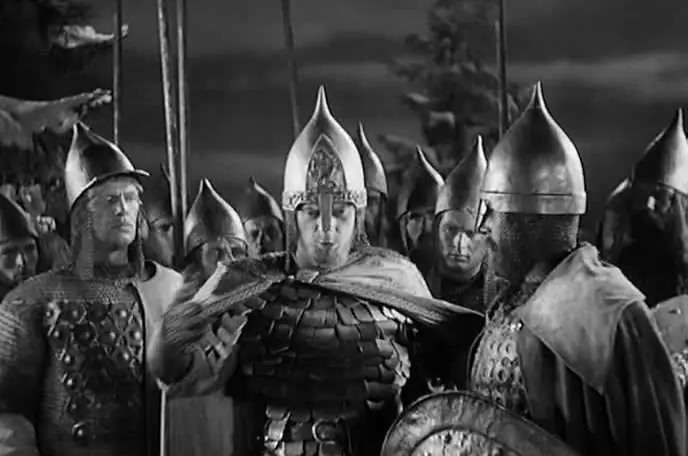
Not the oldest, but the most famous
Let's start with the fact that very few ancient helmets made of iron have survived. And it's clear why. As soon as you stopped caring for such a helmet, it was eaten by rust.

Here is the helmet of Prince Yaroslav Vsevolodovich - just one of these rarest artifacts. This is an Old Russian helmet, which is customarily dated to the second half of the 12th or the first half of the 13th century. Today it is exhibited in the Armory Chamber of the Moscow Kremlin, and is rightfully considered one of the outstanding monuments of the national arms business. It is so functional and truly beautiful.
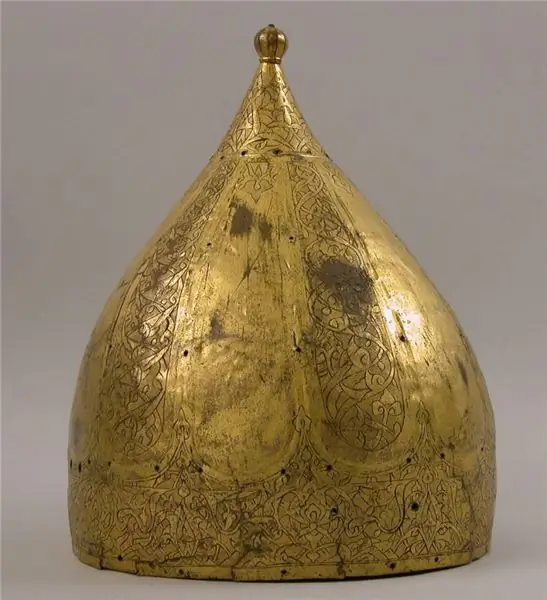
The famous Russian scientist A. N. Kirpichnikov, who created the typology of ancient Russian weapons and helmets, including, attributed it to type IV. And he also emphasized that it was this helmet that became one of the first artifacts, from which the study of Russian antiquities began.
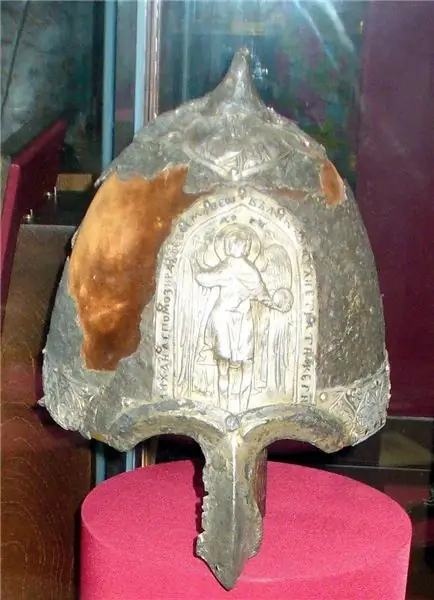
The history of his discovery has long ago turned into a kind of legend in Russian archeology. They say that a certain resident of the village of Lykova A. Larionova, which stood near the city of Yuriev-Podolsky, went in the fall of 1808 into the forest to “pinch nuts”. I went, and I saw a helmet in a bump near the walnut bush, and under it there was also chain mail. And the peasant woman brought her find to the village headman, because there was a holy icon on the helmet, and he handed it over to the bishop. And the helmet eventually reached Alexander I himself, and he gave it to study at the Academy of Arts. We studied the helmet for a long time and decided that it was the helmet of Father Alexander Nevsky, that it was made, most likely, of several metal plates (it’s impossible to find out for sure), and also that it was repeatedly altered.
The helmet was adorned with a forehead plate with the image of the Archangel Michael, and there was also an inscription in Cyrillic: "Help your servant Theodore to help the Archangel Michael." A. N. Kirpichnikov believed that this helmet could be altered at least three times, and that even before it fell into the hands of Prince Yaroslav, it had other owners. According to the historian K. A. Zhukov, the helmet did not have cutouts for the eyes, and it was immediately made with a half mask. N. V. Chebotarev, the author of an interesting article "The helmet of Prince Yaroslav Vsevolodovich" indicates that the forehead icon covers part of the inscription, and this, in theory, could not be if all the details of the helmet were made sequentially.
Movie helmets
As a child, young Alexander undoubtedly dabbled in his father's "military law" and tried on his helmet on himself. This or some other, again, does not matter. It is important how "Yaroslav Vsevolodovich's helmet" was typical of its time. To say that it was all such helmets that our soldiers had … it is impossible because of the scarcity of the material base. However, there is nothing impossible in this. It's just that ordinary soldiers were simpler: the prince had a silver image of the Archangel Michael on his helmet, and the ordinary soldier, most likely, had enough of the helmet itself.
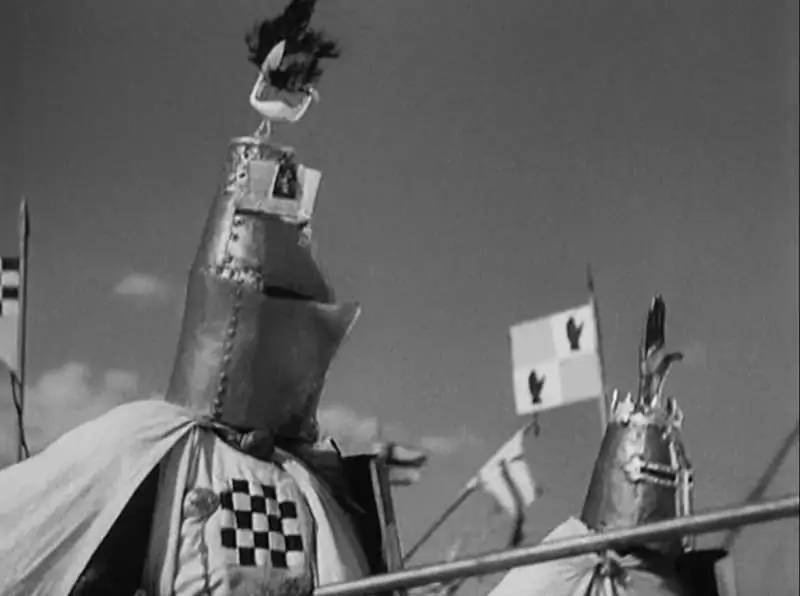
By the way, it was with this helmet that two helmets were made (by the way, why two and why does he wear them at the same time?) For filming the legendary film "Alexander Nevsky". The helmet looks especially impressive and menacing, in which he actually fights on the battlefield - with a half mask and a straight pointed nose. And then they began to print sets of postcards on which Prince Alexander was depicted in a "cine helmet". And since they were printed in thousands of copies, it is not surprising that for a long time we all thought that the “cine helmet” was modeled after what really existed, although this was actually not the case at all.
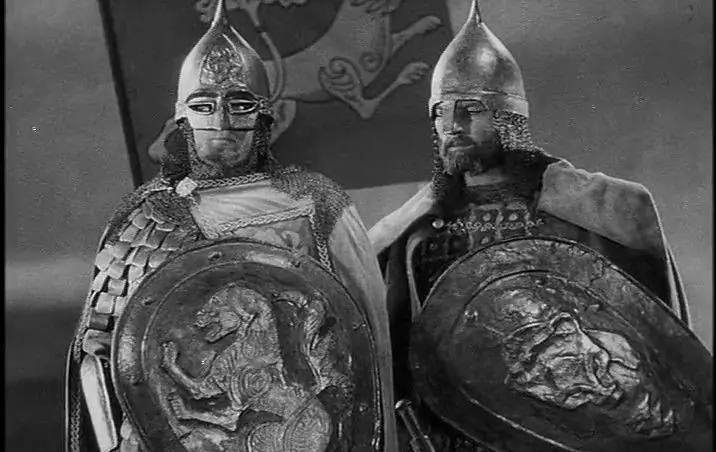
Helmets of Ivan the Terrible and his son
As time went on, military fashions changed, armor improved and helmets finally learned to forge from one sheet. That this is so, we are convinced again by the exhibits of the Armory Chamber and the Stockholm Armory Chamber, which contains the helmet of the Tsar … Ivan the Terrible! For the first time, the helmet of Ivan the Terrible was mentioned in the records of the Royal Arsenal in Stockholm in 1663, but how he got there, what fate is unknown.
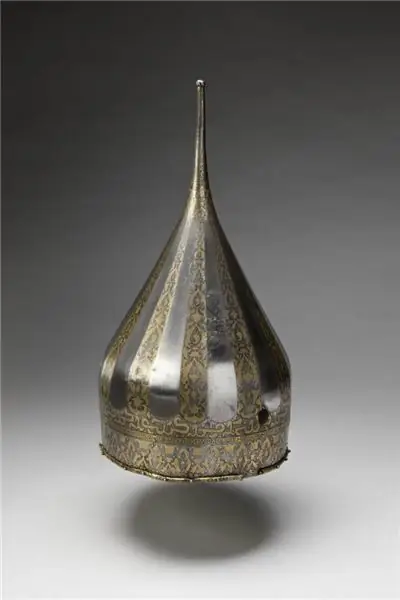
Typologically, it is a "shell", that is, a high conical helmet with a long spire. In the description of the helmet in the Royal Arsenal it is written: height - 380 mm, maximum width 190 mm, helmet weight 1180 g. The description also states that it was made around 1533, and came to Stockholm from Warsaw in 1655. This helmet is very similar to the exhibit from the Metropolitan Museum of Art in New York.
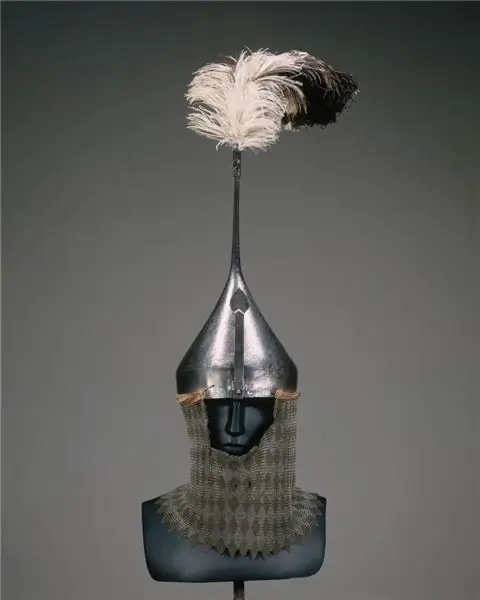
But what is written about the helmet in the previous photo in the accompanying entry in the Metropolitan Museum: “This extremely high conical helmet deserves attention as an example of what helmets were worn in Iran and Russia in the late 15th and early 16th centuries. Such helmets, depicted in miniatures, are often decorated with a small pennant attached to a spire. Culture: southern Russian or Iranian. Material: steel, iron, copper alloy, leather. Dimensions: height 46.7 cm; weight 1560 g.
It is interesting that on the helmet of Ivan the Terrible there are inscriptions in Arabic, but there is also a Russian inscription with the following content: "The shell of Prince Ivan Vasilyevich, Grand Duke, son of Vasily Ivanovich, lord of all Russia, autocrat." But Prince Ivan Vasilyevich became Tsar in January 1547, when he was 16 years old. So the helmet and this inscription were made before that, that is, for the still very young Grand Duke Ivan Vasilyevich! And was it suitable for the head of the matured king, and if not, then to whom did he give it, and who wore it afterwards? Obviously, the work is oriental, but … altered by a Russian master for the needs of the young sovereign.
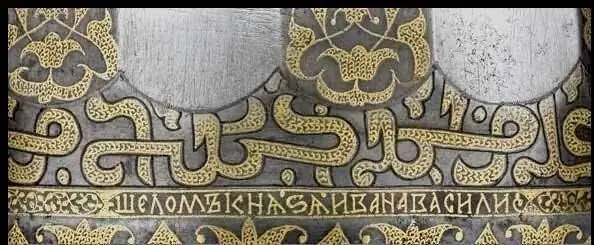
The helmet that belonged to Tsarevich Ivan Ivanovich, the son of Ivan the Terrible, looks like the helmet of his father, it is the same silk, but it is not so richly decorated. But there is also a Russian-language inscription on it, in which it is written that it was made by the order of the prince and Tsar John Vasilyevich for his son John Ioannovich in the summer of 7065 (1557) June on the 8th day.
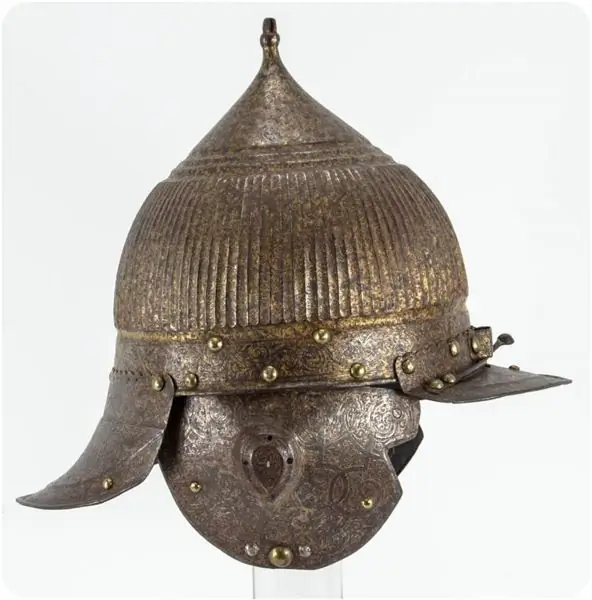
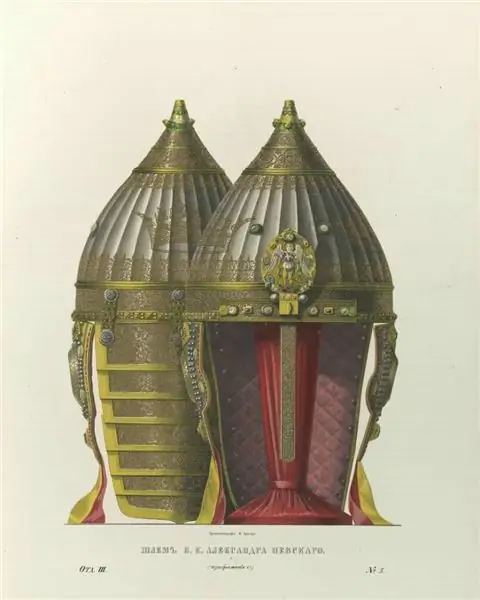
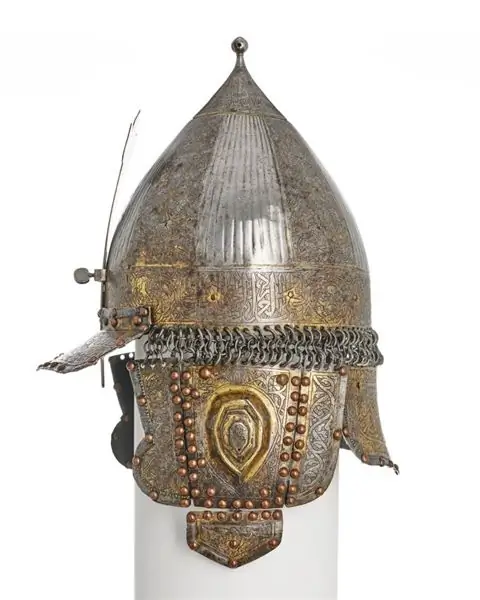
Finally we got to the notorious helmet of Alexander Nevsky, which is actually the helmet of Tsar Mikhail Fedorovich. At first, they say, he was Alexander Nevsky, and then he was remade for the first tsar-father from the Romanov family. This has been stated for a long time. But it is obvious that the helmet was made in the 17th century. And there is an Arabic inscription on it, which translates roughly as: "Please the faithful with the promise of help from Allah and a quick victory." But there is also an image of the Archangel Michael. That only says that this helmet is of eastern, most likely Turkish work, and was presented to Mikhail Fedorovich, who then ordered to add Christian symbols to it. In the documents of the Armory Order, there is a mention of the gunsmith Nikita Davydov, who gilded just at that time a certain helmet and received payment in kind for this.
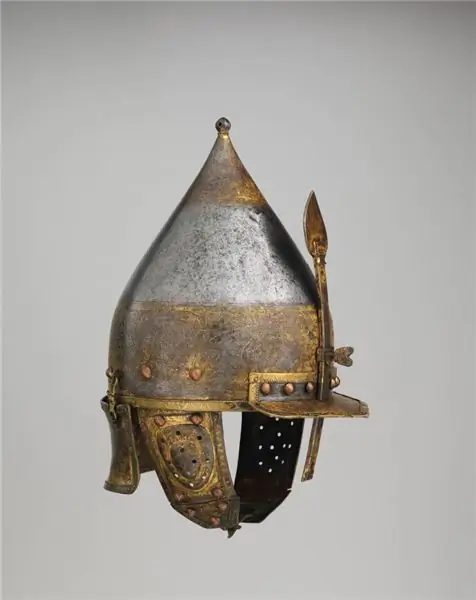
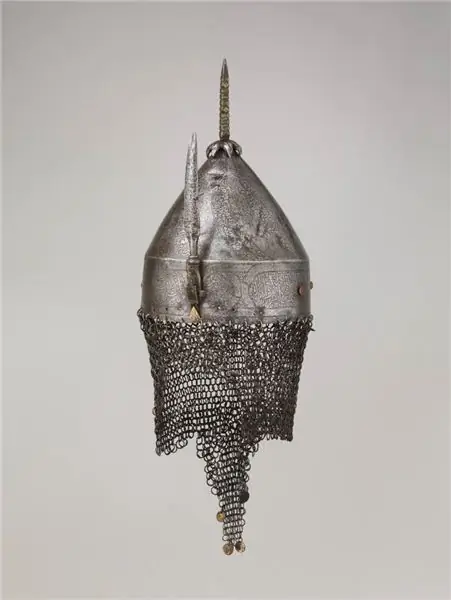
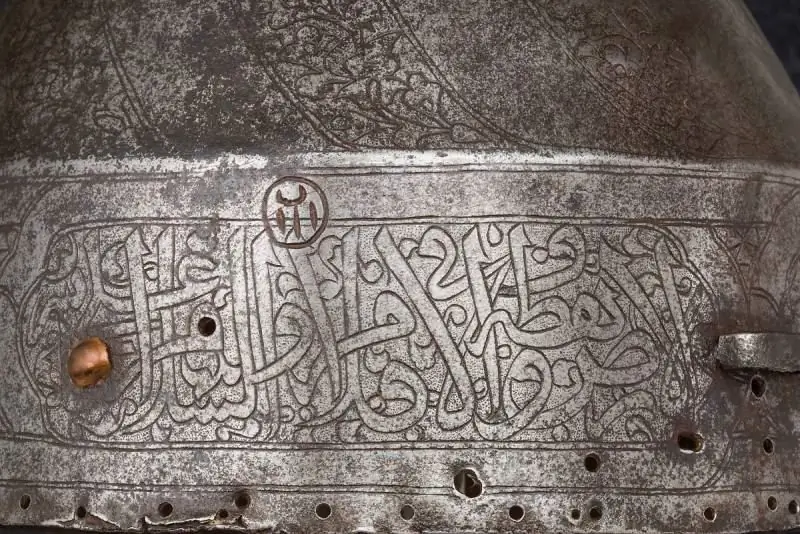
And all this proves only that just at the beginning of the 16th century, as well as in the 17th century, the successes of Turkish weapons and the skill of Turkish armourers made them very popular in Europe, and Russia was no exception. Helmets, yushmans and bakhters, helmets and sabers, as well as shields and firearms, saddles and harnesses of Turkish production were mined as trophies and bought during periods of peace.






